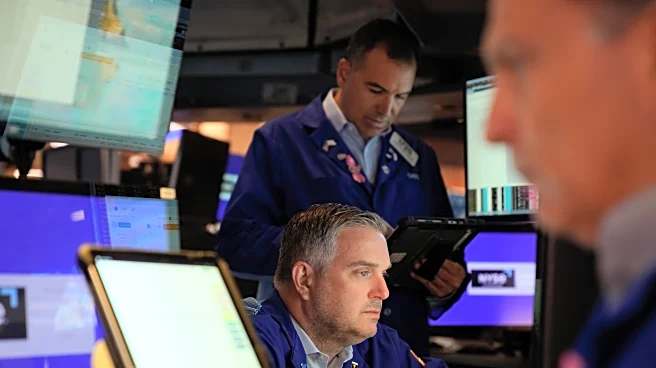What's Happening?
Investors are increasingly investing in assets like gold, bitcoin, and shares due to concerns about government debt, central bank independence, and the weakening of major currencies such as the dollar. This trend, known as the 'debasement trade,' involves moving away from fiat currencies in favor of 'harder' assets that offer protection against inflation. The trade is driven by fears that governments may not be able to control borrowing, leading to high deficits and prioritizing debt financing over price stability. The Trump administration's fiscal policies have contributed to these concerns, with the US national debt reaching $37 trillion.
Why It's Important?
The debasement trade reflects growing anxiety about the sustainability of fiat currencies and the potential for inflation to erode their value. As investors seek alternatives, assets like gold and bitcoin are experiencing significant price increases, with gold reaching $4,000 an ounce and bitcoin hitting $125,000. This shift could have long-term implications for the global financial system, potentially challenging the dollar's status as the global reserve currency and prompting central banks to consider alternative reserve assets.
What's Next?
As concerns about currency debasement persist, investors may continue to allocate more of their portfolios to assets like gold and bitcoin. This trend could lead to further price increases and increased volatility in these markets. Governments and central banks may need to address these concerns by implementing policies to stabilize fiat currencies and reassure investors about debt sustainability.
Beyond the Headlines
The rise of the debasement trade highlights broader issues in the global financial system, including the impact of fiscal policies on currency stability and the role of central banks in managing inflation. It also raises questions about the future of fiat currencies and the potential for alternative assets to play a larger role in the financial landscape.











